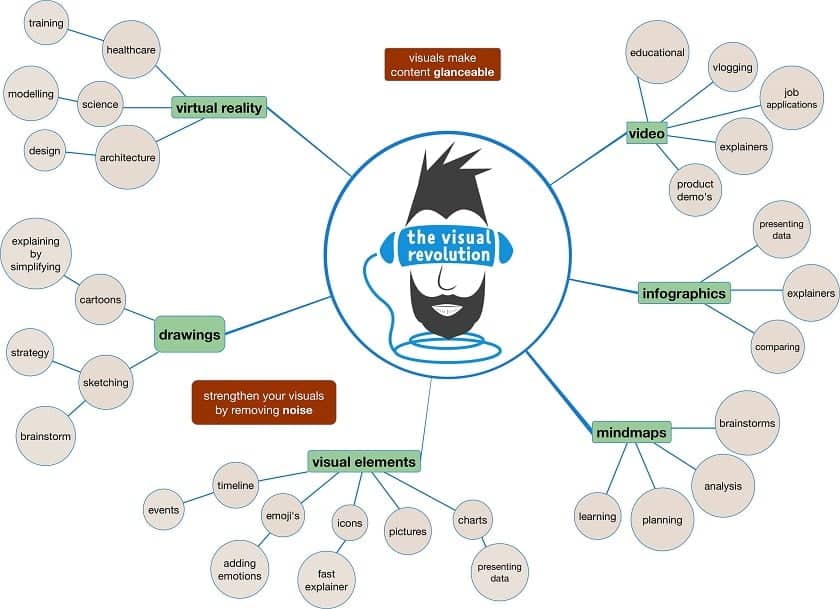I read somewhere that by 2020 video will account for a staggering 75% of mobile data traffic. Four times as many consumers would prefer to watch a video about a product than to read about it. When you open a newspaper, chances are you come across an infographic. Websites of newspapers use more and more interactive maps to present data.
Every second almost 5000 (!) photos are posted on Facebook. In the city where I live a paper started publishing my mind maps. You could easily argue that the visual revolution is over. For the existing power – texts – has been overthrown by visuals. The revolution has succeeded and it is easy to see why and how. Communicating ideas or solving problems is all about the art of explanation (read the excellent book by Lee Lefever The art of explanation) and this is so much easier done by using visuals.
Choose the right visual tool
Since the revolution is over, it is time to use the right kind of visual tool for what you want to explain or solve. E.g. comparing products is much easier with an infographic than using a mind map. However, with respect to brainstorming, it is just the other way round.
Mind mapping is the perfect tool for that and an infographic is not suitable at all. Demonstrating a product is best done in a video and not in a mind map. Conversely to make a marketing plan use mind mapping (in combination with project planning).
Last but not least, make crossovers. Enrich for example mind maps with icons or videos. Check this mind map about the importance of having a crisis communication strategy containing six videos that play within the mind map. The best of both worlds. Having said that by 2020 video will account for 75% of mobile data traffic, when is video functionality added to mind map software? Who takes up the gauntlet?
About the author





